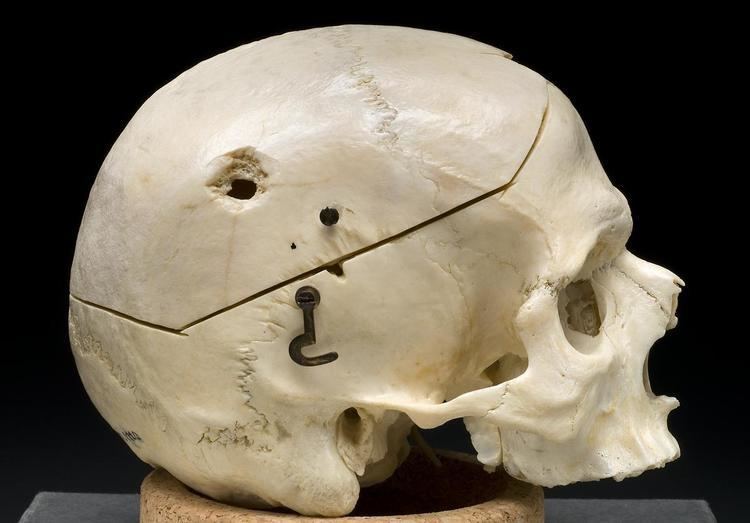 | ||
Ballistic trauma, also known as gunshot wound (GSW) or bullet wound, is a form of physical trauma sustained from the discharge of arms or munitions. The most common forms of ballistic trauma stem from firearms used in armed conflicts, civilian sporting, recreational pursuits and criminal activity. Ballistic trauma can be fatal or cause long-term consequences.
Contents
Destructive effects
The degree of tissue disruption caused by a projectile is related to the size of the temporary versus permanent cavity it creates as it passes through tissue. The extent of cavitation, in turn, is related to the following characteristics of the projectile:
The immediate damaging effect of a gunshot wound is typically severe bleeding, and with it the potential for hypovolemic shock, a condition characterized by inadequate delivery of oxygen to vital organs. In the case of traumatic hypovolemic shock, this failure of adequate oxygen delivery is due to blood loss, as blood is the means of delivering oxygen to the body's constituent parts. Devastating effects can result when a bullet strikes a vital organ such as the heart or lungs, or damages a component of the central nervous system such as the spine or brain.
Common causes of death following gunshot injury include exsanguination, hypoxia caused by pneumothorax, catastrophic injury to the heart and larger blood vessels, and damage to the brain or central nervous system. Additionally, gunshot wounds typically involve a large degree of nearby tissue disruption and destruction due to the physical effects of the projectile. Non-fatal gunshot wounds frequently have severe and long-lasting effects, typically some form of major disfigurement and/or permanent disability.
Gunshot injuries can vary widely from case to case since the location of the injury can be in any part of the body, with wide variations in entry point. Also, the path and possible fragmentation of the bullet within the body is unpredictable. The study of the dynamics of bullets in gunshot injuries is called terminal ballistics.
As a rule, all gunshot wounds are considered medical emergencies that require immediate treatment. Hospitals are generally required to report all gunshot wounds to police.
Origins of medical treatment
Hieronymus Brunschwig argued that infection of gunshot wounds was a result of poisoning by gunpowder, which provided the rationale for cauterizing wounds. Ambroise Paré wrote in his 1545 book, The Method of Curing Wounds Caused by Arquebus and Firearms, that wounds should be sealed rather than cauterized. John Hunter argued that infection was not caused by poisoning.
Until the 1880s, the standard practice for treating a gunshot wound called for physicians to insert their unsterilized fingers into the wound to probe and locate the path of the bullet. Surgically opening abdominal cavities to repair gunshot wounds, germ theory, and Joseph Lister's technique for antiseptic surgery using diluted carbolic acid, first demonstrated in 1865, had not yet been accepted as standard practice. For example, sixteen doctors attended to President James A. Garfield after he was shot, and most probed the wound with their fingers or dirty instruments. Historians agree that massive infection was a significant factor in Garfield's death.
At almost the same time, in Tombstone, Arizona Territory, on 13 July 1881, George E. Goodfellow performed the first laparotomy to treat an abdominal gunshot wound. Goodfellow pioneered the use of sterile techniques in treating gunshot wounds, washing the patient's wound and his hands with lye soap or whisky. He became America's leading authority on gunshot wounds and is credited as the United States' first civilian trauma surgeon.
Surgical advances
Wilhelm Röntgen's discovery of X-rays in 1895 led to the use of radiographs to locate bullets in wounded soldiers.
Survival rates for gunshot wounds improved during the Korean and Vietnam Wars, due in part to helicopter evacuation, along with improvements in resuscitation and battlefield medicine. Similar improvements were seen in the trauma practices during the Iraq War. Some military trauma care practices are disseminated by citizen soldiers who return to civilian practice. One such practice is to transfer major trauma patients to an operating theater as soon as possible, to stop internal bleeding. Within the United States, the survival rate for gunshot wounds has increased, leading to apparent declines in the gun death rate in states that have stable rates of gunshot hospitalizations.
